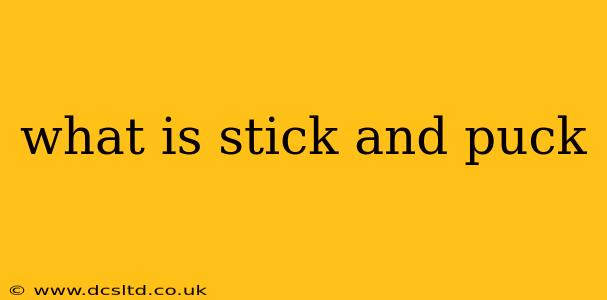Stick and puck is a popular form of on-ice hockey practice where players hone their individual skills in a casual, unstructured setting. It's a great way to improve puck handling, shooting, passing, and overall hockey sense without the pressures of a formal game or practice. But what exactly does it entail, and who can benefit from it? Let's dive in.
What Happens During a Stick and Puck Session?
Typically, a stick and puck session involves players skating on the ice with their sticks and pucks, independently practicing various skills. There's no organized team structure or coaching; players are free to work on whatever they feel needs improvement. Common activities include:
- Puck handling drills: Working on stickhandling skills like moving the puck through cones, weaving around obstacles, or performing various stickhandling moves.
- Shooting practice: Taking shots on net, focusing on accuracy, power, and different shot types (wrist shots, slap shots, backhands).
- Passing drills: Practicing passing accuracy and speed with a partner or by passing the puck against a wall.
- Shooting accuracy practice: Targeting specific areas of the net to improve shooting precision.
- Offensive and defensive movement: Practicing skating with the puck, avoiding defenders (imaginary or real), and performing various offensive maneuvers.
Who Benefits From Stick and Puck?
Stick and puck is beneficial for a wide range of hockey players, from beginners to seasoned professionals.
- Youth players: Develop foundational skills and build confidence on the ice.
- Adult players: Maintain fitness, improve skills, and enjoy the game in a relaxed environment.
- Players of all skill levels: Identify areas for improvement and focus on specific skills without the pressure of a game situation.
- Recreational players: Enjoy the sport without the commitment of a league or team.
Is Stick and Puck Right for Me?
Whether stick and puck is right for you depends on your goals and preferences. If you enjoy independent practice and want to improve your individual hockey skills in a relaxed environment, then stick and puck is a great option. If you prefer structured practices or team environments, you may find stick and puck less appealing.
Where Can I Find Stick and Puck Sessions?
Many ice rinks offer public stick and puck sessions at various times and days. Check with your local rink for availability and pricing.
What Equipment Do I Need for Stick and Puck?
You'll need standard hockey equipment, including:
- Skates: Properly fitted skates are crucial for comfort and performance.
- Hockey stick: Choose a stick that is the right length and flex for your size and strength.
- Puck: A standard hockey puck.
- Helmet: A properly fitted hockey helmet is mandatory for safety.
- Gloves: Hockey gloves provide protection for your hands.
- Other Protective Gear: While not always mandatory, elbow pads, shin guards, and shoulder pads are recommended for safety.
How Often Should I Do Stick and Puck?
The frequency of your stick and puck sessions will depend on your individual goals and schedule. Some players attend multiple times a week, while others might only attend once a month. Consistency is key to seeing improvement.
How Much Does Stick and Puck Cost?
The cost of stick and puck varies depending on the rink and location. Prices generally range from a few dollars to upwards of twenty dollars per session. Check with your local rink for specific pricing.
By understanding the basics of stick and puck and weighing its benefits, you can determine if it's the right addition to your hockey journey. Remember, consistency and focus are key to making the most of your on-ice practice.
